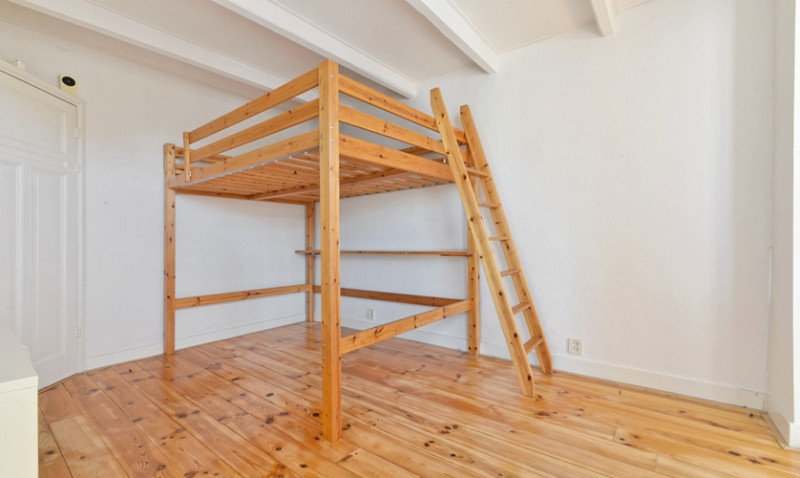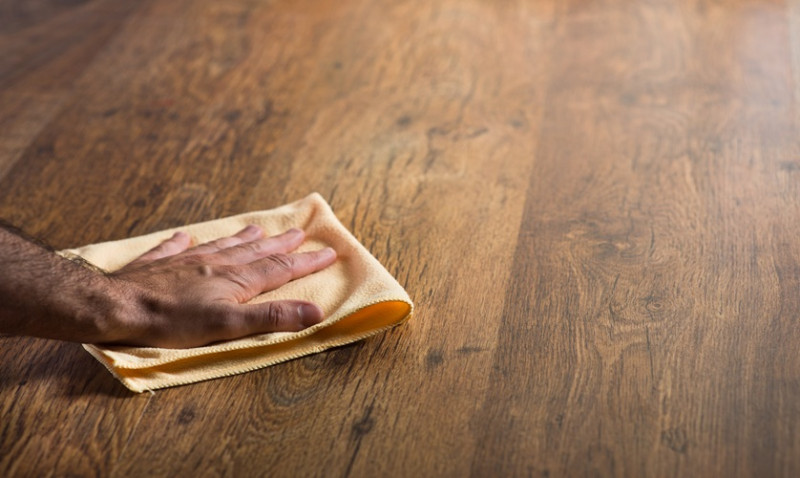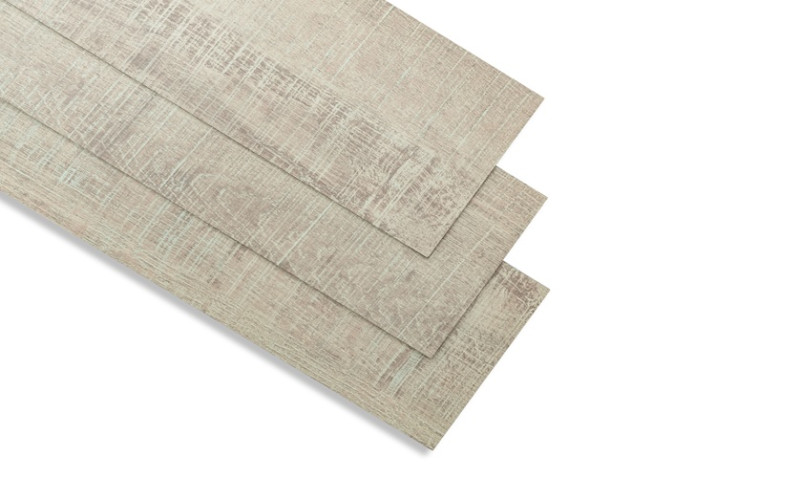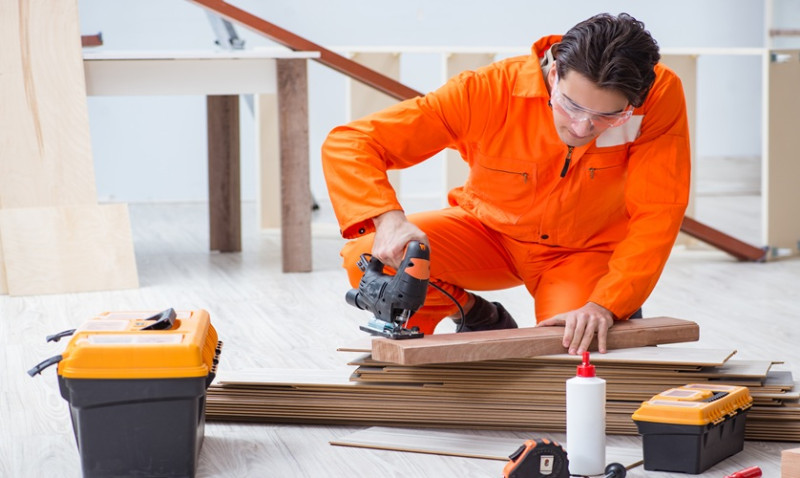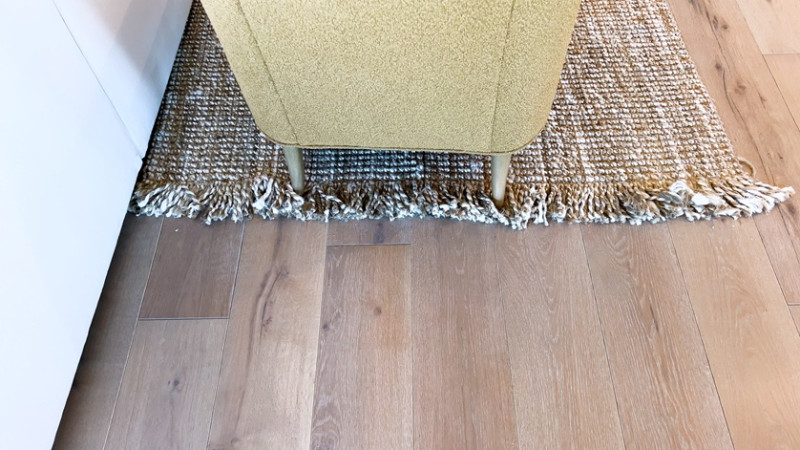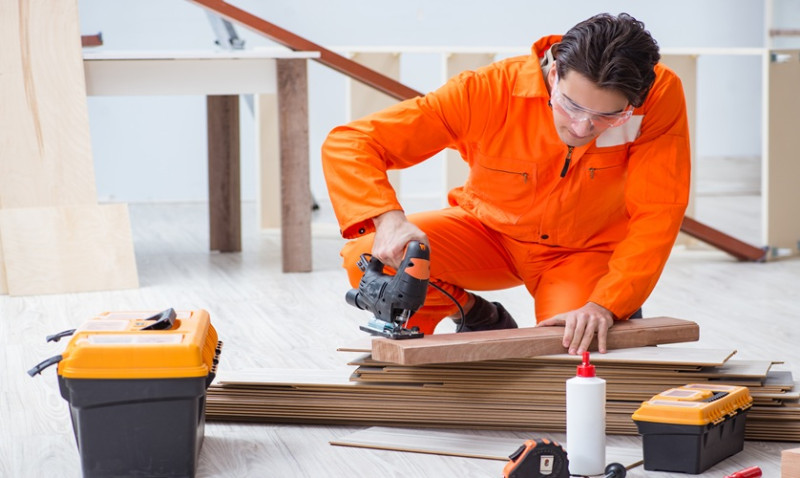
Flooring is a fundamental part of any interior design project, whether you're a passionate DIYer upgrading your first home, a young professional revamping your space, or a trade professional offering new options to clients. In recent years, two flooring types have dominated the UK market: Luxury Vinyl Tile (LVT) and Laminate. While they may appear similar at a glance—both are budget-friendly alternatives to hardwood or stone—they differ in terms of construction, performance, maintenance, and price.
This guide will break down the pros and cons of both materials, helping you make a smart, informed flooring choice. Whether you're furnishing a modern flat in London, refreshing a countryside cottage, or specifying finishes for a commercial project, there’s a lot to consider when it comes to LVT vs. Laminate flooring.
What is Luxury Vinyl Tile (LVT)?
LVT is a high-performance, synthetic flooring product designed to mimic the look of natural materials like wood, stone or ceramic. It’s constructed from multiple layers, typically including a protective wear layer, a high-resolution decorative layer, and PVC backing for stability.
One of LVT’s most appealing features is its waterproof quality. This makes it an excellent choice for spaces prone to moisture, such as kitchens, bathrooms, or utility rooms. Some LVT products also come with an added acoustic layer for improved sound insulation, a bonus feature in flats or terraced homes.
There are two main types of LVT: glue-down and click-lock (also known as floating). Glue-down requires adhesive and is more suitable for commercial or high-traffic areas. Click-lock versions can be laid over existing flooring, making them ideal for homeowners and DIYers looking for a straightforward installation process.
Unlike older vinyl floors, modern LVT achieves incredibly realistic visuals thanks to high-definition printing and textured surface embossing. From rustic oak planks to contemporary concrete slabs, LVT offers the aesthetics of natural materials with the functional benefits of vinyl.
What is Laminate Flooring?
Laminate flooring is a multi-layered product made from high-density fibreboard (HDF) covered with a high-resolution image of wood or tile and topped with a durable, transparent wear layer. It’s gained popularity across the UK thanks to its cost-effectiveness, ease of installation, and realistic finishes.
Laminate floors are hardwearing and scratch-resistant, making them well-suited to living rooms, bedrooms, and hallways. Although most laminate options are not entirely waterproof, water-resistant varieties have emerged, offering better protection in damp-prone spaces.
Installation is typically via a click-lock system, which doesn’t require nails or adhesives—ideal for DIYers. Laminate also benefits from underlay padding, improving thermal comfort and sound insulation.
While laminate floors cannot be sanded or refinished like hardwood, they often offer a lifespan of 10–20 years when cared for properly. And with cleaner, simpler maintenance compared to carpet or wood, it’s a practical choice for busy homes and rental properties alike.
Comparing LVT and Laminate: Pros & Cons
| Feature | LVT | Laminate |
|---|---|---|
| Water Resistance | Fully waterproof – suitable for bathrooms and kitchens | Water-resistant (some models) but generally not waterproof |
| Durability | Highly durable and impact-resistant | Durable, but can swell with prolonged moisture exposure |
| Realistic Appearance | Very realistic textures and visuals | Highly realistic wood looks; slight edge to LVT overall |
| Comfort & Noise | Softer underfoot and quieter | Harder feel; may sound hollow without quality underlay |
| Installation Method | Click-lock or glue-down options – click is beginner-friendly | Click-lock system – ideal for DIY installation |
| Price | Slightly more expensive per m² than laminate | Cost-effective and widely available |
| Maintenance | Easy to clean; mop or vacuum | Also easy to clean; damp cloth preferred |
| Heat Resistance | Stable under most indoor temperatures | Prone to temperature fluctuations – expansion gaps needed |
Pros of LVT Flooring
- Waterproof: LVT's vinyl layers create a waterproof barrier, ideal for bathrooms, kitchens, and utility rooms across UK households.
- Quiet and Comfortable: It has a softer and warmer feel underfoot than laminate or tile, making it comfortable for standing over long periods—perfect for home chefs.
- Highly Durable: Resistant to scratches, dents, and everyday wear, which is especially suited for homes with pets or children.
- Easy Maintenance: Sweep regularly and mop with a damp cloth. No waxing or polishing required.
- Authentic Looks: High-resolution photographic layers give LVT a convincing natural look, even up close.
Cons of LVT Flooring
- Higher Cost: Generally more expensive than laminate, especially premium LVT with acoustic or cushion layers.
- Not Ideal for Heat: Can be sensitive to extreme temperatures and may expand. Not recommended near log burners unless fire-rated.
- Can Be Slippery: Some LVT finishes may feel slick if wet, though textured versions are available to offset this.
- May Fade: Prolonged direct sunlight might cause some fading over time without UV protection.
Pros of Laminate Flooring
- Budget Friendly: Laminate is generally cheaper than LVT, making it a popular choice for large renovations or buy-to-let properties.
- Wide Style Range: A huge selection of finishes and shades are available to match any interior, from Scandinavian minimalism to rustic farmhouse.
- Scratch Resistance: Good wear layers make laminate resilient to dings and scrapes from daily life.
- DIY-Friendly: Most laminate uses a floating click-lock installation system, perfect for weekend warriors or budget renovations.
Cons of Laminate Flooring
- Not Waterproof: Even splash-resistant types can't withstand standing water—spills must be cleaned up quickly to avoid swelling or delamination.
- Sound & Feel: Laminate can feel harder and noisier, especially if not paired with high-quality underlay.
- Not Refinishable: Once the wear layer is damaged, the entire plank must be replaced.
- Temperature Sensitivity: May expand or contract with temperature changes—requires careful acclimatisation and spacing during install.
Which Flooring is Right for You?
Choosing between LVT and laminate ultimately comes down to the specific needs of your space and lifestyle. Are you installing flooring in a high-moisture area like a kitchen or bathroom? LVT is your best bet. Looking for a budget-friendly, stylish solution for a lounge or spare bedroom? Laminate offers excellent value and visual punch.
Young professionals and first-time buyers may appreciate the straightforward, self-install options of both floors, while property developers or landlords might opt for laminate’s cost-to-performance ratio. Architects and interior designers, on the other hand, may prioritise aesthetics, and will find plenty of design flexibility in both options.
If you're concerned about longevity and moisture resistance, particularly in flats or high-traffic family homes, the extra investment in LVT will pay off over time. That said, modern laminate shouldn't be overlooked—it can be surprisingly robust when well selected and correctly installed.
Ultimately, your ideal floor will balance appearance, expected wear, moisture levels, and budget. Whichever you choose, both LVT and laminate flooring provide stylish solutions with comparatively low maintenance—each well-suited to life in homes and workplaces across the UK.
Ready to Choose Your Flooring?
Explore our latest collections of Luxury Vinyl Tile and Laminate flooring designed to inspire and transform your interiors. Whether you're taking on a full-home renovation or sprucing up a single room, we've got options that combine premium aesthetics, practical features, and sustainability.
Looking for free samples or expert advice? Browse online or visit one of our UK showrooms to feel the textures for yourself. Let your new floor reflect your style, and your smarts.
